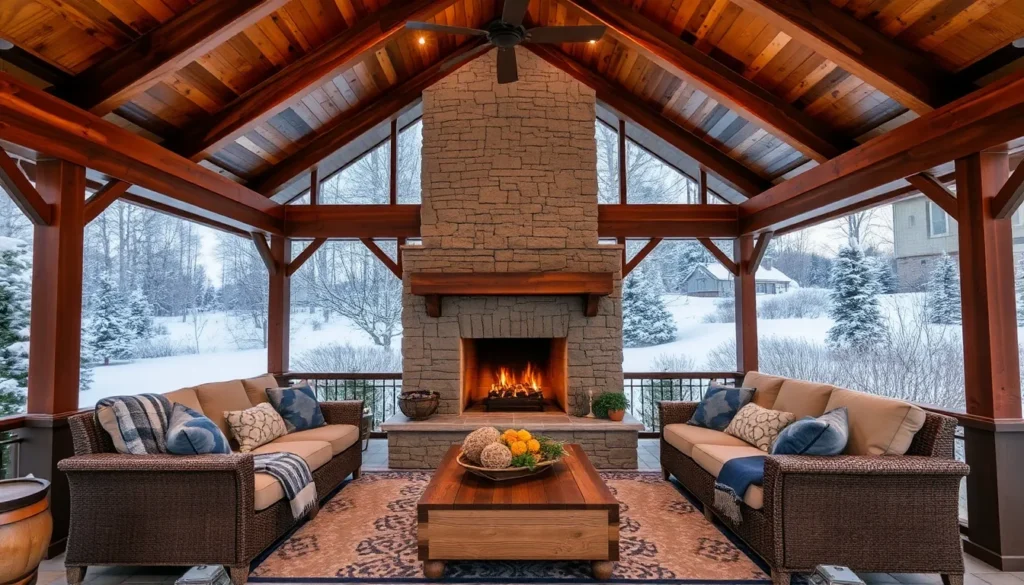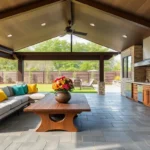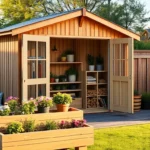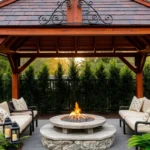As the chill of winter sets in, transforming your outdoor space into a cozy retreat can be both a delightful challenge and a rewarding endeavor. Whether you’re a seasoned homeowner with a passion for design or someone dipping their toes into outdoor living for the first time, creating a winter-ready haven is a chance to extend the enjoyment of your backyard sanctuary. This article will explore a variety of inviting structures that not only stand up to the cold but also offer a warm embrace for family gatherings and quiet moments alike.
Dive in with us as we unveil 12 inspiring ideas that balance practicality with style, ensuring your outdoor space remains a vibrant part of your home all year round. From rustic pergolas adorned with fairy lights to modern glass-enclosed pavilions, you’ll discover innovative solutions tailored to different tastes and budgets. These structures will not only shield you from winter’s chill but also invite you to savor the season’s unique charm in comfort and style.
Choosing Insulated Outdoor Cabins
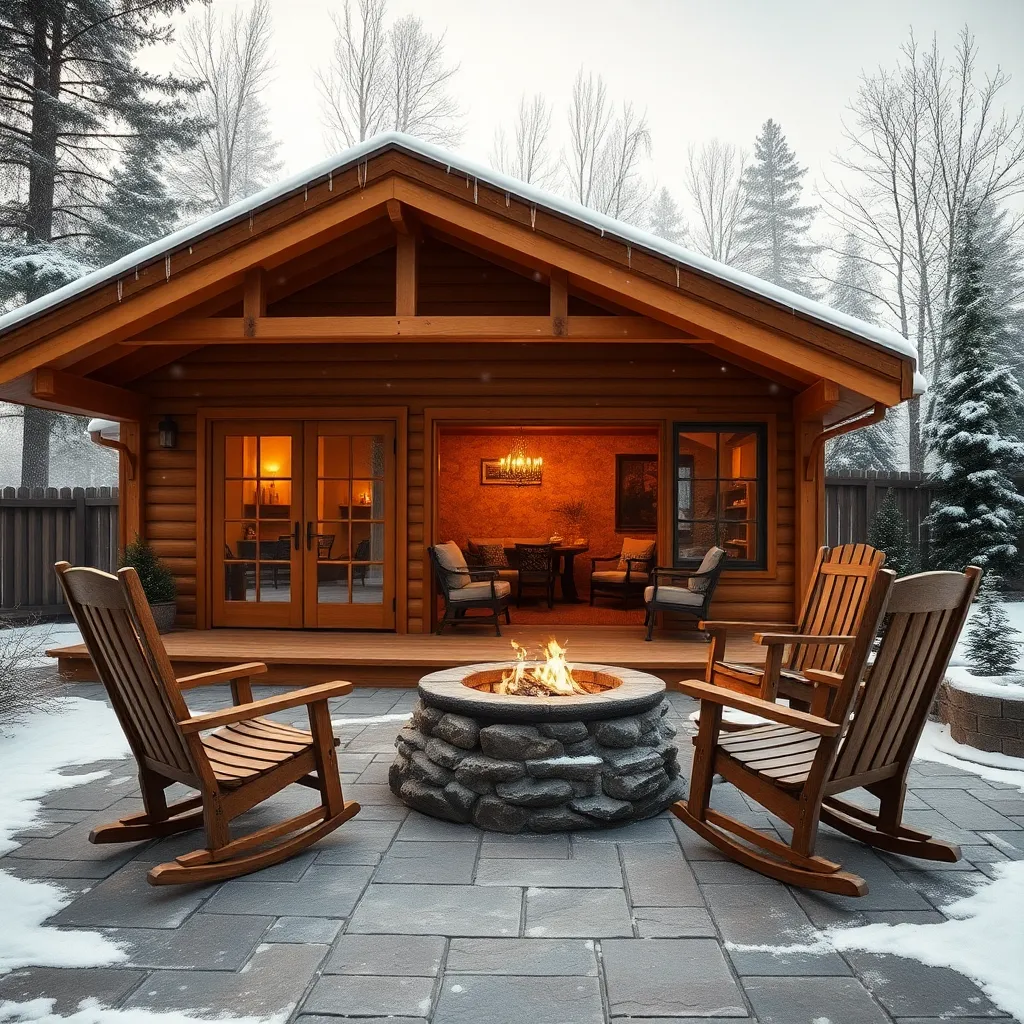
When choosing an insulated outdoor cabin, consider the materials that provide the best thermal protection. Opt for high-quality, weather-resistant wood like cedar or redwood, which naturally withstands harsh winter conditions. For added insulation, incorporate materials such as foam board between the layers of your cabin’s walls. This not only keeps the cold out but also helps maintain a cozy atmosphere inside, making your cabin a perfect retreat during winter months.
Think about the design elements that will enhance both comfort and functionality. Ensure your cabin is equipped with well-sealed windows and doors to prevent drafts, and consider adding a small wood-burning stove for warmth and ambiance. Advanced gardeners might want to explore solar panels for sustainable energy use, providing both heat and lighting. With these tips, you can create a warm, inviting space that allows you to enjoy your outdoor surroundings even in the coldest weather.
Designing Cozy Winter Gazebos
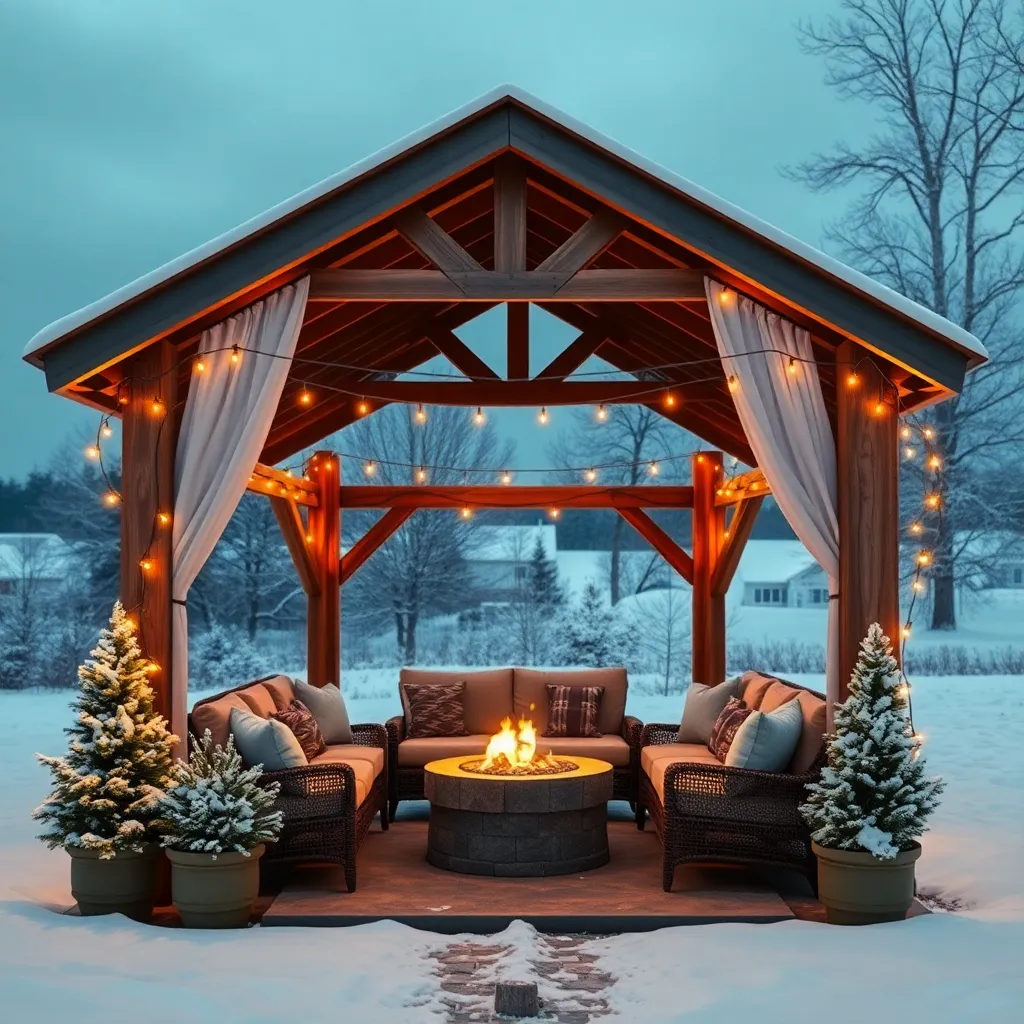
Designing a cozy winter gazebo begins with choosing the right materials. Opt for durable woods like cedar or redwood, known for their natural resistance to rot and decay. Incorporate weatherproof roofing materials, such as metal or shingles, to withstand harsh winter conditions. For added warmth, consider enclosing the gazebo with removable glass panels or heavy-duty canvas curtains, which provide excellent insulation while maintaining a view of the winter landscape.
To create a warm and inviting atmosphere, focus on incorporating key design elements. Install a small wood-burning stove or a propane heater to keep the space comfortable. Consider adding plush seating with weather-resistant cushions and throw blankets for extra coziness. For advanced customization, integrate built-in lighting such as string lights or lanterns to illuminate the space, enhancing its charm during dark winter evenings. These thoughtful touches will transform your gazebo into a winter retreat you’ll love to use.
Building Heated Garden Sheds
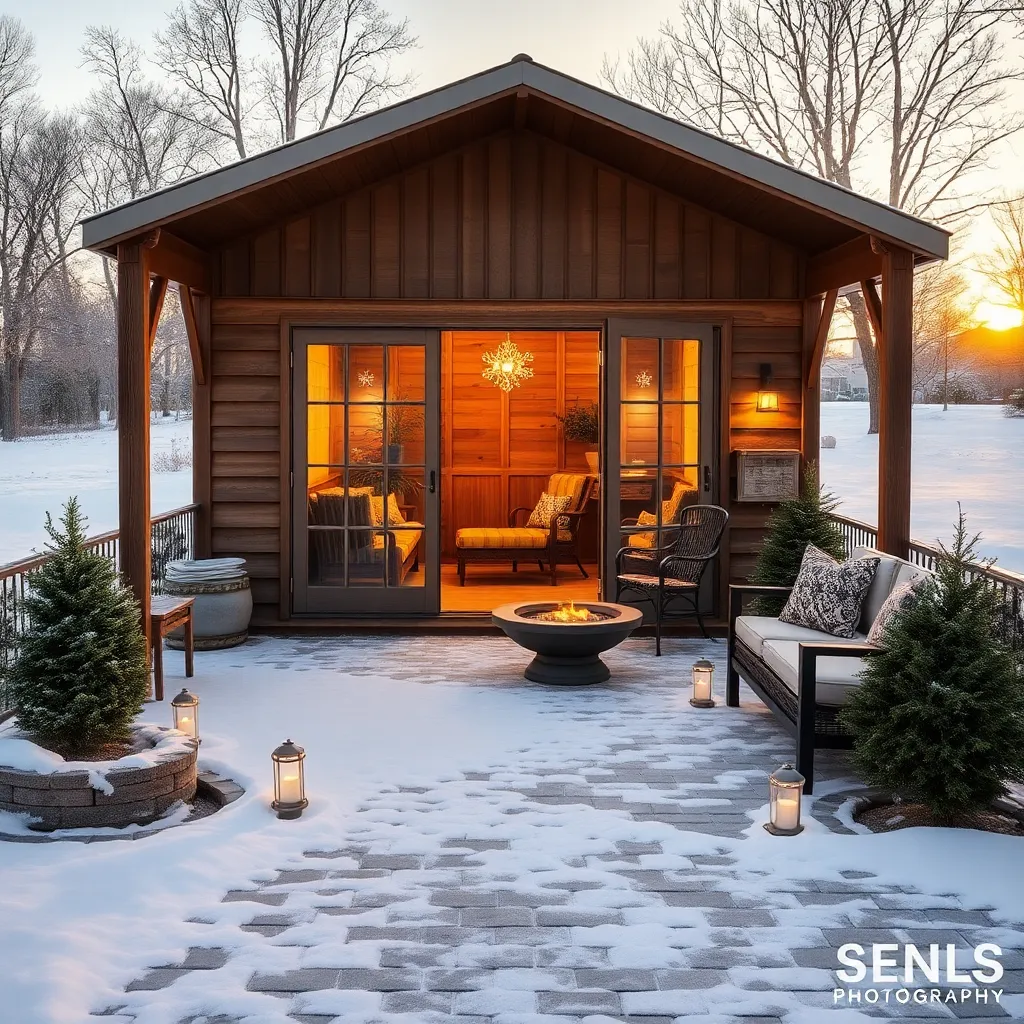
Creating a heated garden shed can transform your outdoor space into a cozy retreat even in the heart of winter. Start by selecting the right materials; consider using insulated wall panels to maintain warmth and reduce energy costs. For flooring, opt for thick plywood or composite decking to provide a sturdy base with added insulation. Ensure your shed design includes proper ventilation like adjustable vents to manage humidity and prevent condensation, which is crucial for maintaining a comfortable environment inside.
For heating, explore energy-efficient options such as electric infrared heaters or propane heaters, which are both effective and relatively simple to install. Beginners may start with a basic electric heater, but if you’re more experienced, consider integrating a small wood stove for a rustic touch. Remember to incorporate fire-resistant materials around the heat source and position it to allow even heat distribution. Finally, enhance the shed’s coziness with weatherproof furnishings and soft textiles, turning it into a welcoming winter haven.
Transforming Pergolas for Cold Weather
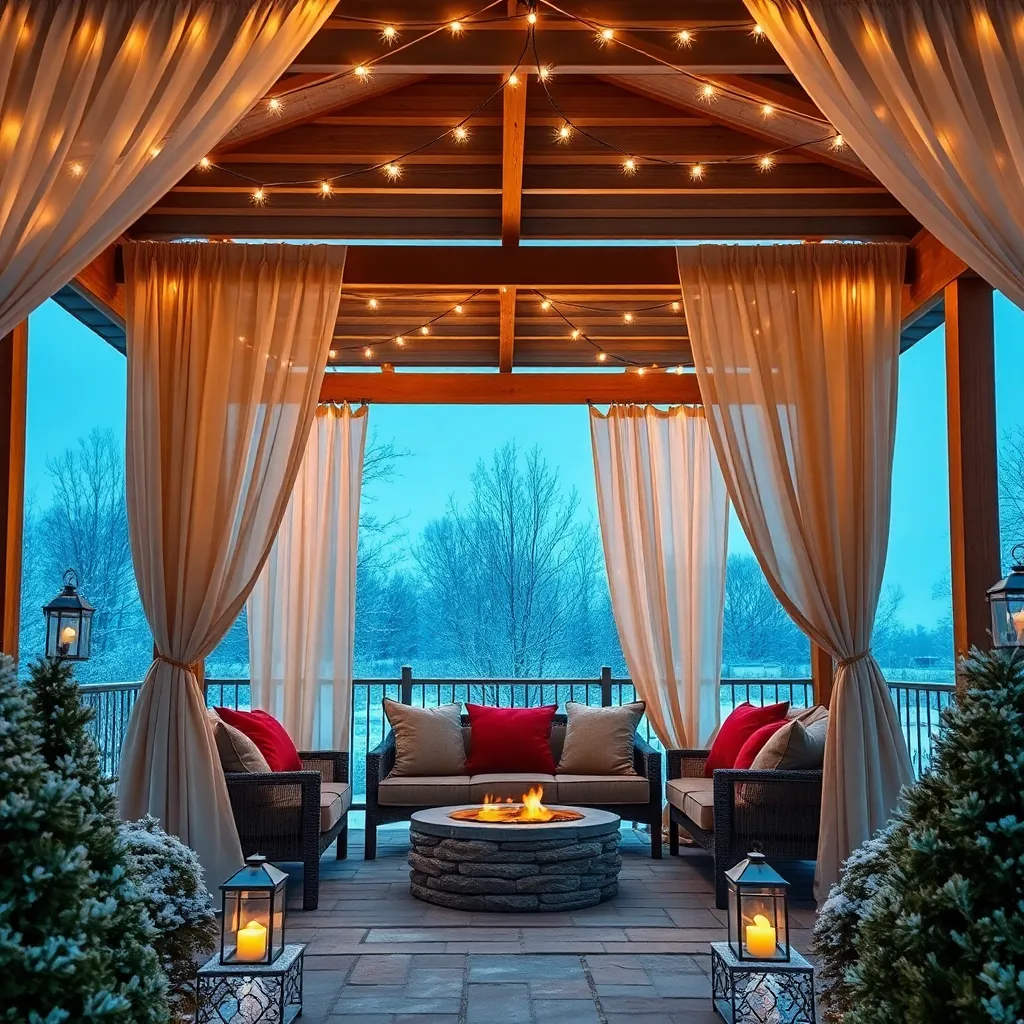
For those looking to transform their pergolas for winter, consider enclosing the space with weather-resistant materials like clear PVC curtains or heavy-duty tarps. These materials not only provide protection against cold winds but also allow sunlight to filter through, keeping the area bright and inviting. Adding outdoor-safe heaters, such as electric or propane patio heaters, can help maintain a cozy temperature, making the pergola a year-round retreat.
Enhance the warmth and aesthetic appeal by incorporating natural elements such as wooden slats or bamboo panels, which can offer additional wind protection and privacy. For a more advanced touch, you can install insulated roofing panels to further shield against harsh weather.
- Ensure that any additions are securely fastened to withstand winter storms.
- Consider using weatherproof cushions and throws to add comfort and style.
This combination of functionality and design can make your pergola a perfect winter sanctuary.
Incorporating Fire Pits in Shelters

Incorporating a fire pit into your outdoor shelter can transform it into a cozy retreat during chilly months. Choose a fire pit made of durable materials like cast iron or stainless steel, which can withstand harsh weather conditions. For a basic setup, position the fire pit in the center of the shelter to ensure even warmth distribution. Ensure the shelter is well-ventilated to safely accommodate the smoke, using open sides or strategically placed vents.
For those looking to elevate their fire pit setup, consider building a sunken pit with built-in seating, using heat-resistant bricks or stones. This advanced option not only adds a stylish touch but also optimizes space and heat efficiency. When designing, ensure your seating is at least 3 feet away from the fire pit to maintain safety and comfort. Adding weather-resistant cushions and throw blankets can enhance the cozy feel, inviting homeowners to enjoy their outdoor spaces even in colder weather.
Utilizing Portable Winter Yurts
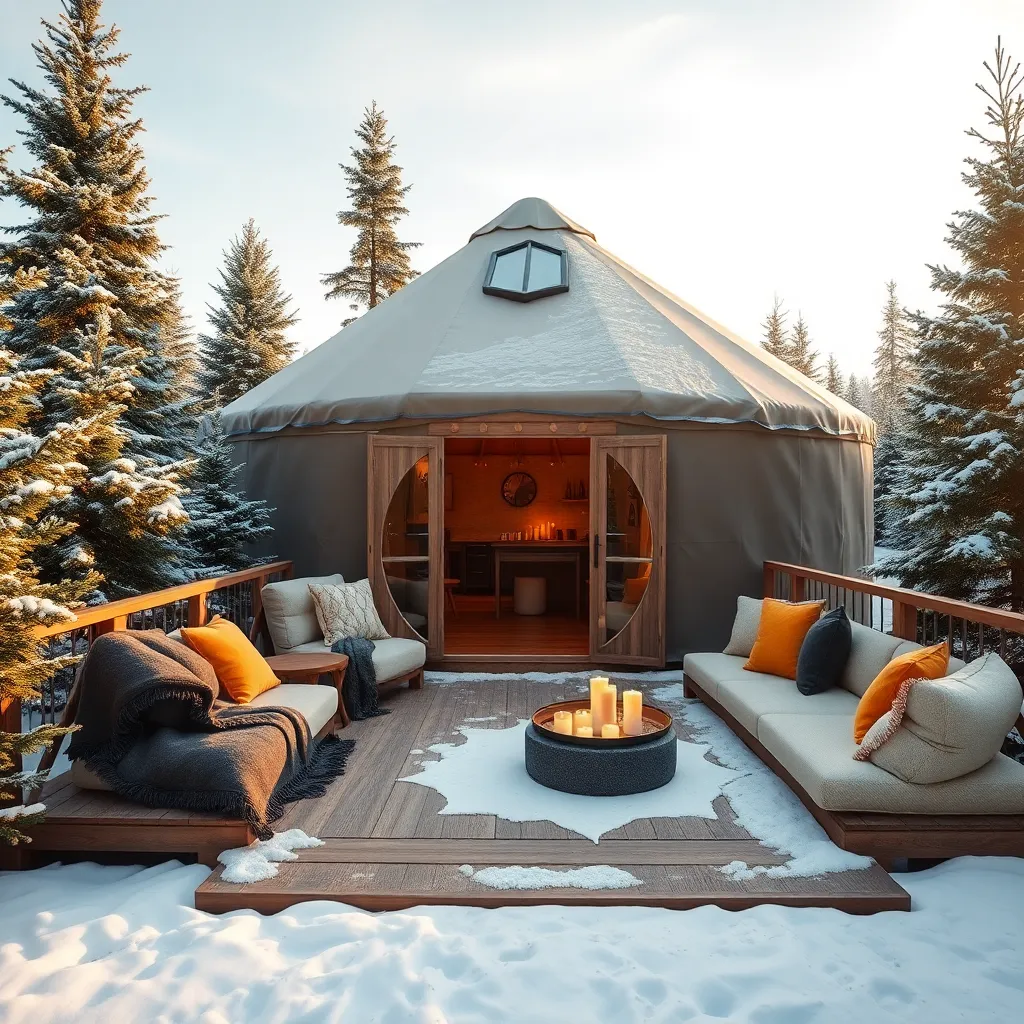
For those seeking a cozy yet portable winter retreat, consider adding a yurt to your outdoor space. Lightweight and easy to assemble, modern yurts are often made from durable materials like weather-resistant canvas and insulated fabric, offering excellent protection from the elements. Many models feature a wooden lattice frame that provides stability and can withstand heavy snow loads. Ensure you select a yurt with a diameter that suits your needs—common sizes range from 12 to 30 feet, accommodating anything from a small seating area to a larger family gathering space.
To enhance comfort, incorporate features such as a thermal liner or a wood stove for warmth. A thick floor cover or raised platform can prevent heat loss from the ground, while vented skylights allow for natural light and airflow. For a touch of luxury, consider adding solar-powered lights and plush textiles. When you’re ready to dismantle for the season, these structures can be packed away compactly. For those looking to personalize their space, adding decorative elements like colorful rugs or wall hangings can transform the yurt into a uniquely inviting winter haven.
Crafting Enclosed Patio Retreats
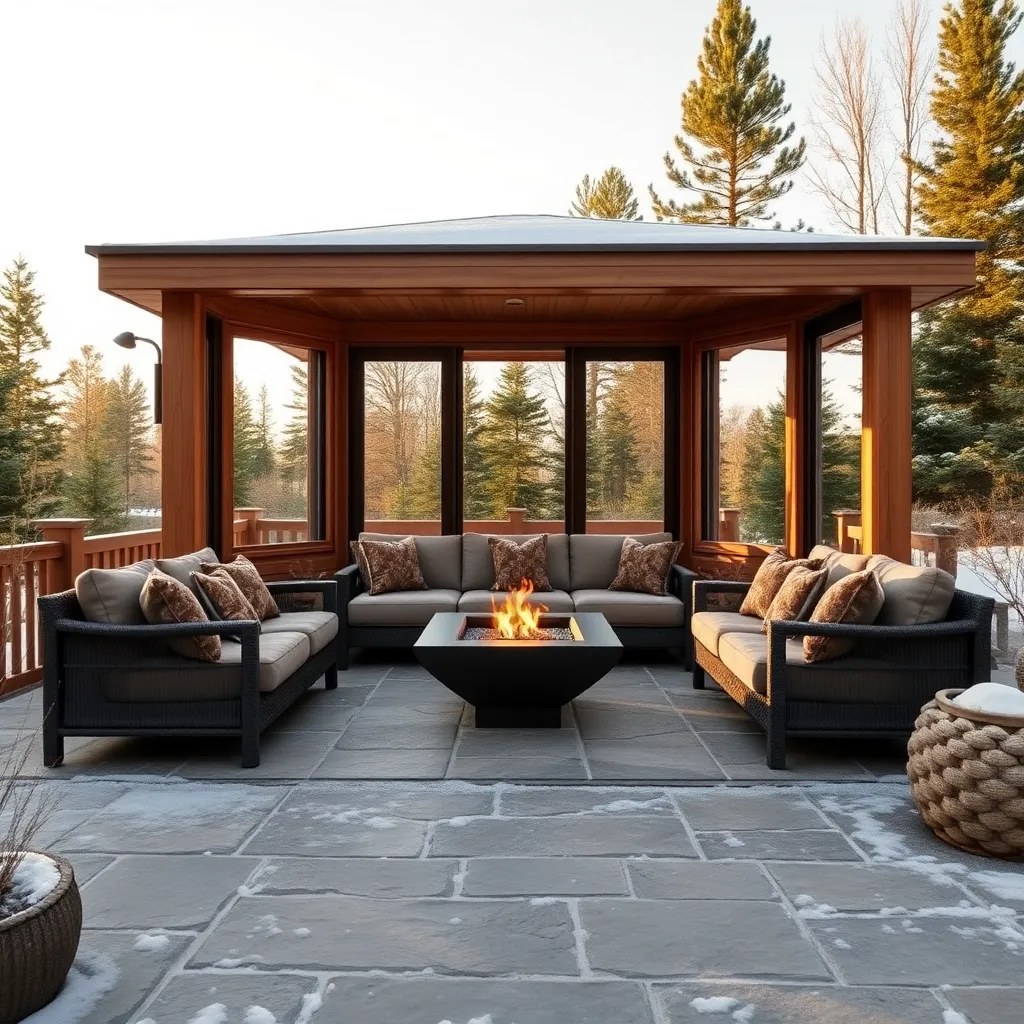
Transforming your patio into an enclosed retreat is an excellent way to enjoy your outdoor space during the colder months. Begin with selecting appropriate materials such as clear polycarbonate panels or tempered glass for the walls, which allow natural light to filter through while providing insulation. Consider using treated wood or aluminum for the frame to ensure durability against winter elements. Incorporate weatherproof sealants and insulation strips to keep drafts at bay, creating a cozy haven that you can use throughout the season.
Adding design elements like a small electric fireplace or a patio heater can enhance warmth, making your enclosed patio both functional and inviting. Utilize soft furnishings such as weather-resistant cushions and throws to create a comfortable atmosphere. For a touch of elegance, install string lights or lanterns to add ambient lighting that complements winter evenings. Beginners can start with a simple structure, while more advanced DIY enthusiasts might explore integrating sliding doors or retractable roofs for versatility. This balanced mix of comfort and practicality ensures your patio serves as a welcoming retreat regardless of the temperature outside.
Installing Snow-Proof Canopies
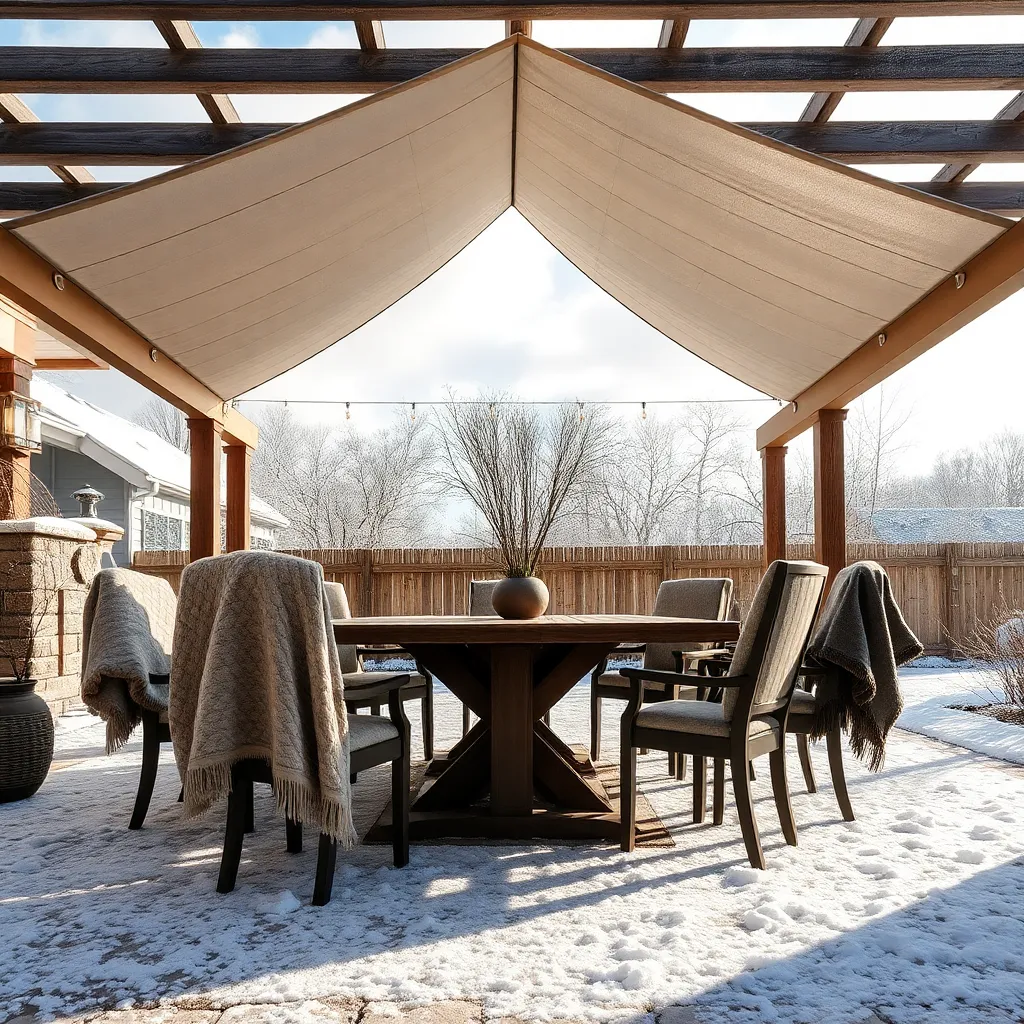
To ensure your outdoor space remains inviting during snowy months, installing a snow-proof canopy is a wise choice. Begin by selecting a canopy material that can withstand heavy snow loads, such as reinforced polycarbonate panels or heavy-duty PVC. These materials are known for their durability and can support the weight of snow without sagging. Ensure the canopy is pitched at an angle to facilitate snow runoff, ideally between 30 to 45 degrees, preventing accumulation that could lead to potential structural damage.
For a more permanent solution, consider a steel or aluminum frame, which provides robust support and longevity. Anchoring the canopy securely is crucial; use concrete footings or ground anchors to prevent shifting during winter storms. For those with advanced DIY skills, integrating gutters into the design is a great way to manage runoff efficiently. Additionally, applying a snow-melt system, like heated cables, can enhance safety and reduce maintenance efforts. By following these steps, you can create a reliable and cozy outdoor shelter, perfect for enjoying winter’s beauty while staying comfortably protected.
Enhancing Treehouses for Winter Use
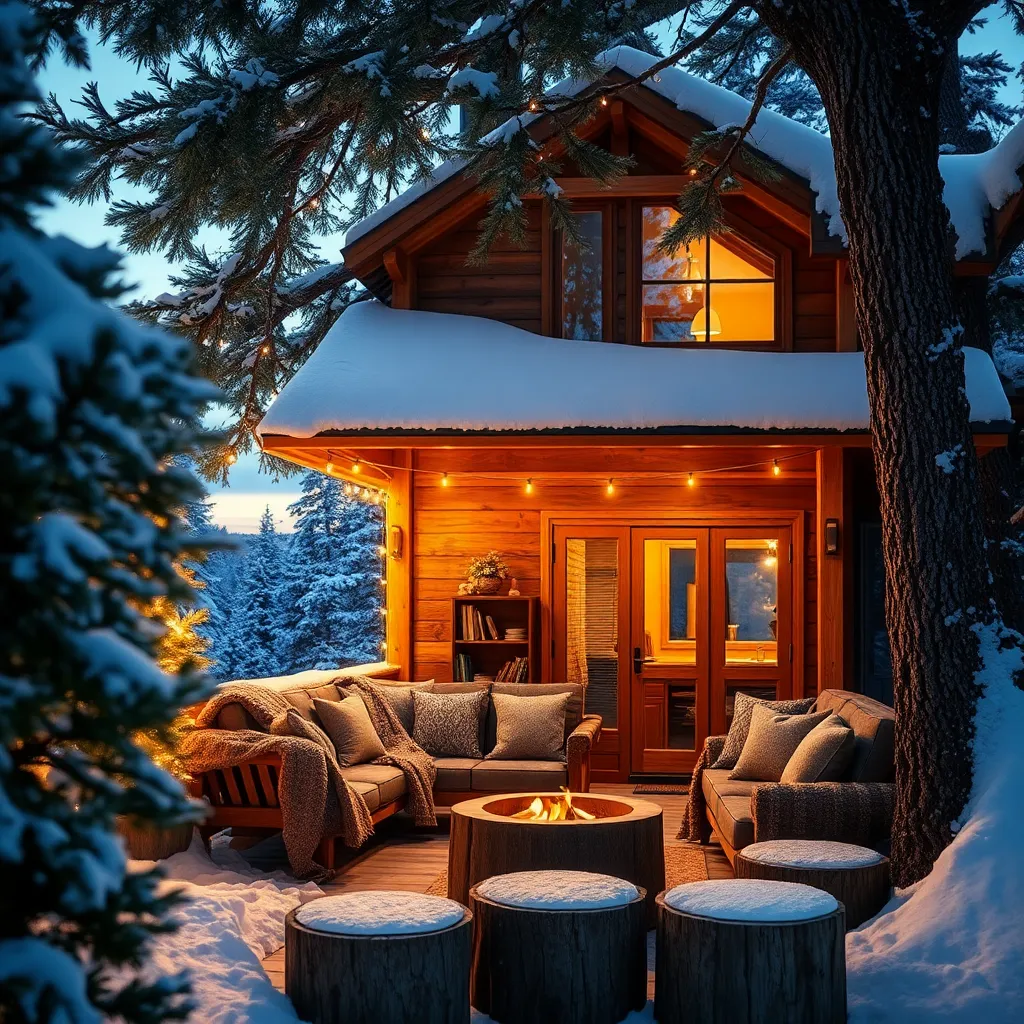
Enhancing your treehouse for winter use starts with ensuring it’s well-insulated and weatherproof. Begin by installing thick, weather-resistant insulation on walls and floors using materials like foam board or spray foam, which are effective at keeping cold drafts at bay. For the exterior, apply a coat of high-quality, weatherproof sealant to protect against moisture and freezing temperatures. This simple upgrade can significantly improve warmth and comfort.
To make your treehouse a cozy winter retreat, consider adding heating elements such as a small, energy-efficient electric heater or a wood-burning stove, ensuring proper ventilation and fire safety measures are in place. For an advanced touch, incorporate double-glazed windows to enhance insulation while allowing natural light to flood in. You can also use
- thermal curtains
- rugs
- and throw blankets
to add layers of warmth and style, transforming your treehouse into a snug hideaway during the colder months.
Adapting Greenhouses for Cozy Comfort
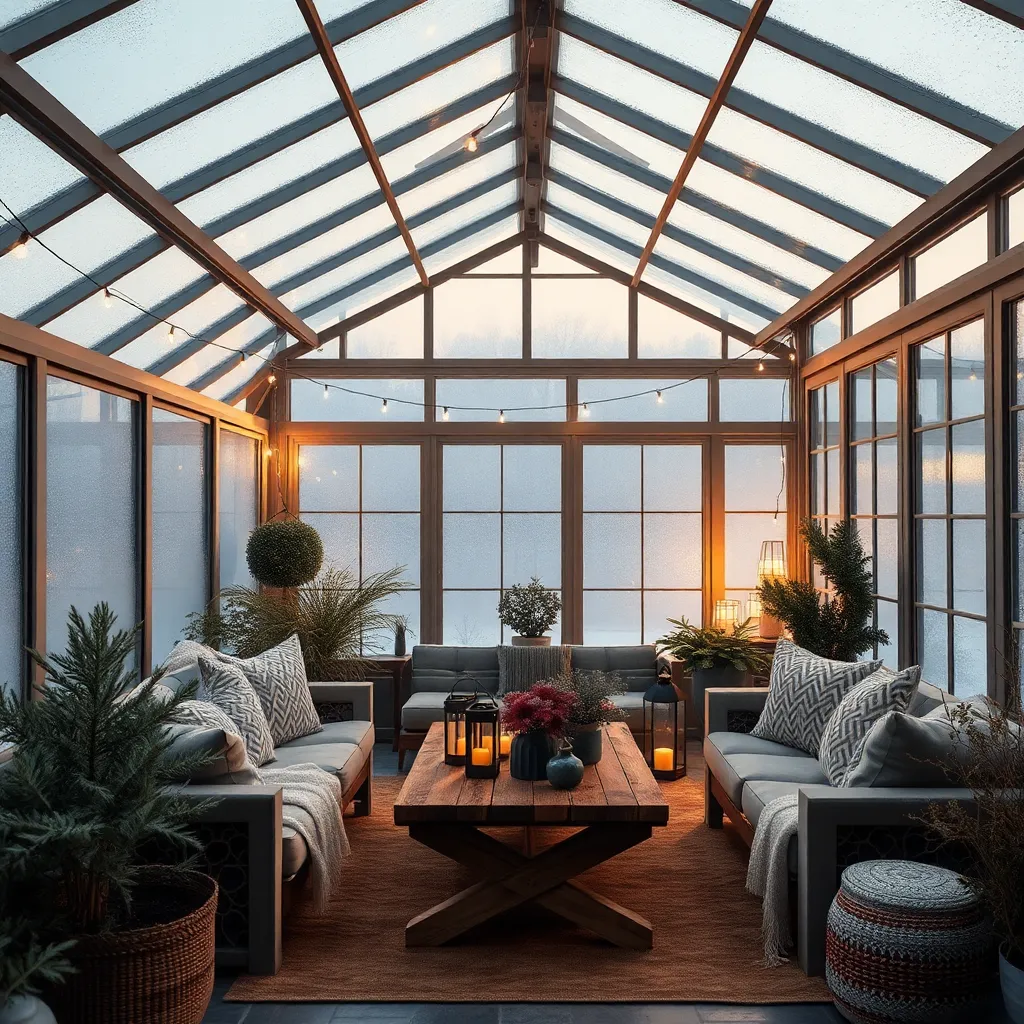
Transforming your greenhouse into a winter haven can be both simple and rewarding. Begin by ensuring your structure is well-insulated; consider adding a layer of bubble wrap or thermal insulation sheets to retain warmth. Install weatherstripping around doors and windows to minimize drafts, and utilize a small space heater to maintain a cozy temperature. For added comfort, incorporate a seating area with weather-resistant cushions and throws, making it a perfect spot to relax among your plants.
To enhance the ambiance, consider installing LED grow lights, which not only support plant growth but also illuminate the space during shorter winter days. Adding a decorative touch, such as a small water feature or a few potted evergreens, can create a serene atmosphere. Advanced gardeners might install a solar-powered ventilation system to maintain air circulation while conserving energy. Consider the layout carefully to maximize both plant and personal space, ensuring that your greenhouse becomes a warm retreat even in the coldest months.
Creating Warmth with Outdoor Kitchens
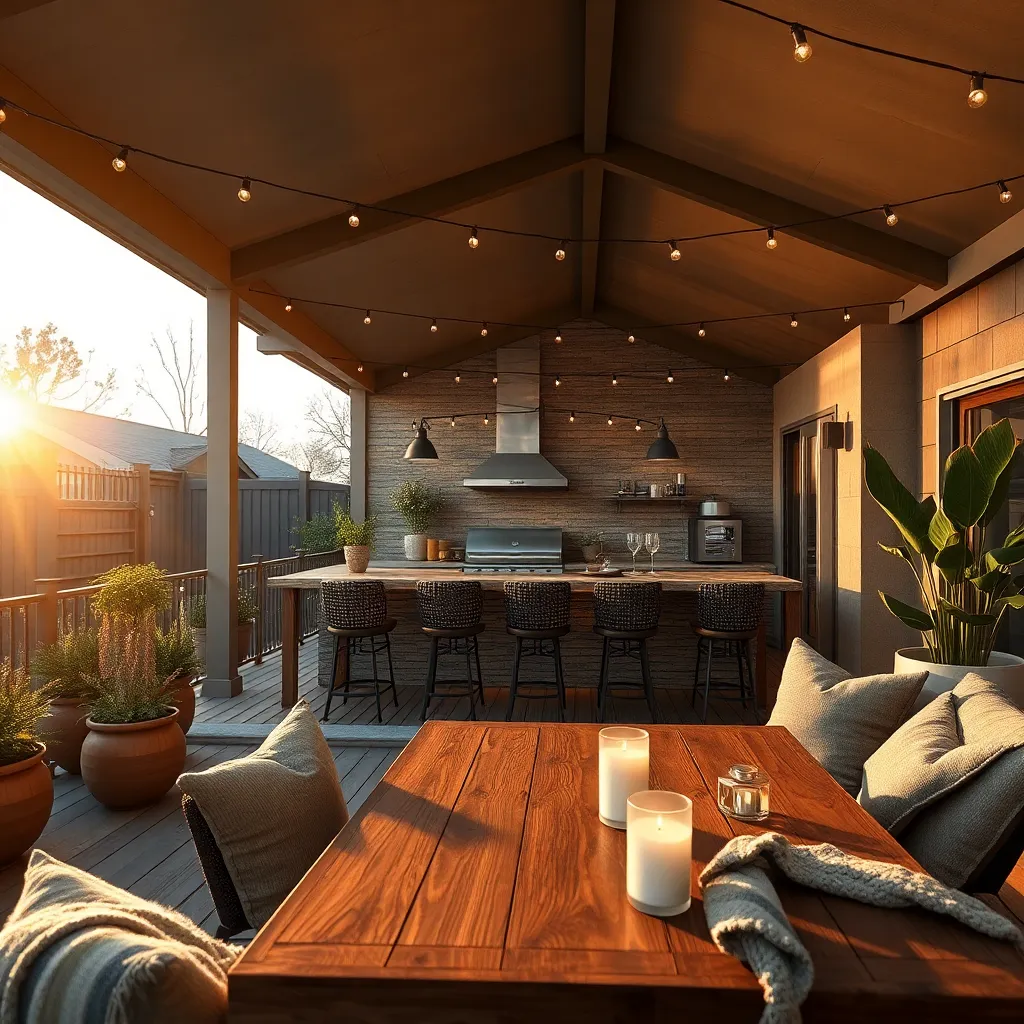
Transforming an outdoor kitchen into a winter haven involves incorporating elements that provide both warmth and functionality. Start by installing a built-in grill with an overhead shelter to protect against the elements, ensuring you can cook comfortably even in chilly weather. Use materials like stainless steel and stone for durability and heat retention. For beginners, consider a basic setup with a portable propane heater or a fire pit nearby, which can also double as a gathering spot.
To enhance your outdoor kitchen’s ambiance and efficiency, experienced DIYers might integrate infrared heaters or heated countertops crafted from materials such as granite. Incorporating a windbreak using wooden screens or tall plants can help shield the area from cold breezes, making it more inviting. Additionally, adding cozy seating with weather-resistant cushions ensures comfort, while strategically placed lighting enhances both safety and atmosphere during darker winter evenings.
Maximizing Comfort in Winter Tents

To maximize comfort in winter tents, start with selecting the right materials. Opt for a tent with a high-quality, waterproof outer layer, such as polyester or nylon with a durable water repellent (DWR) finish. For insulation, choose a tent with a double-walled design featuring a breathable inner layer to minimize condensation. Ensure proper ventilation by incorporating adjustable vents that help regulate airflow and reduce moisture build-up inside the tent.
Implementing smart design features can significantly enhance warmth and comfort. Use a thick, insulated ground tarp or tent footprint to create a barrier against the cold ground. Consider adding a portable, safe tent heater for those particularly frigid nights, and always ensure it is used according to safety guidelines. Layering your bedding with thermal sleeping pads and down sleeping bags can also provide extra warmth. For an advanced tip, create a small vestibule area outside the main tent entrance to reduce heat loss when entering or exiting, and to store damp gear separately from your sleeping area.
Conclusion: Creating Beautiful Outdoor Spaces
In exploring ’12 Cozy Outdoor Structures for Winter Use,’ we’ve uncovered a treasure trove of relationship-enhancing concepts nestled within each inviting space. From creating intimate nooks for heartfelt conversations to designing inviting outdoor dining areas that foster togetherness, each structure offers unique opportunities to deepen connections. We’ve also highlighted the importance of shared experiences, such as stargazing under a warm canopy or enjoying a fireside chat, which can significantly strengthen bonds. By embracing these cozy outdoor retreats, you can transform the chilly months into a season of warmth and love.
Your next step is simple yet profound: choose one of these ideas and incorporate it into your life this winter. Whether it’s a small fire pit gathering or a cozy reading nook, make it a priority to share this space with your loved ones. As you embark on this journey, remember to bookmark this article for easy reference, allowing you to revisit these ideas whenever inspiration strikes.
Looking ahead, the consistent nurturing of your relationships—fueled by creativity and intention—promises a future filled with deeper connections and enduring love. Let these cozy structures serve as a catalyst for building a relationship that thrives, no matter the season.

